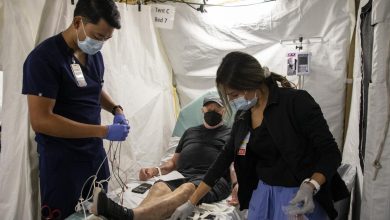San Francisco’s 2026 Health Care Rate Hike: Will You Be Able to Afford It?

Health care has always been a hot-button issue in the United States, but for San Franciscans, the year 2026 could mark a turning point. With health care premiums projected to rise significantly, residents are asking themselves a pressing question: “Will I be able to afford it?”
This article takes a deep dive into the causes behind the expected hike in San Francisco’s health care rates, what it means for individuals, families, and businesses, and—most importantly—what options exist to cope with the coming financial strain.
The Current Landscape of Health Care in San Francisco
San Francisco is known for its innovation, tech-driven economy, and cultural diversity. But beneath its prosperity lies a health care system that is among the most expensive in the country.
- High Premiums Already: As of 2025, the average monthly health insurance premium for a single adult in San Francisco ranges between $550 and $800, depending on coverage. Families can pay well over $2,000 per month.
- Employer-Sponsored Coverage: Many companies in the Bay Area provide health benefits, but even employer plans come with rising deductibles and co-pays.
- Medicare and Medi-Cal: While safety nets exist, they don’t fully cover the middle-income population—those who earn too much to qualify for subsidies but not enough to easily handle steep premiums.
With 2026 around the corner, analysts warn that premiums could rise by 10–15%, putting even more pressure on households.
Why Are Rates Increasing in 2026?
Several factors are converging to drive up health care costs in San Francisco:
1. Inflation in Medical Services
Medical care inflation has outpaced general inflation for decades. Rising wages for health professionals, higher pharmaceutical costs, and expensive new medical technologies all push rates upward.
2. Hospital Consolidation
Large hospital systems dominate the Bay Area, reducing competition. When fewer providers control the market, prices go up.
3. Post-Pandemic Aftershocks
The COVID-19 pandemic created a backlog of untreated conditions. Now, more patients are seeking delayed care, driving up demand and costs simultaneously.
4. Insurance Market Pressures
Insurers argue that risk pools are becoming more costly as chronic conditions increase. In San Francisco, high rates of diabetes, mental health needs, and aging populations contribute to these pressures.
5. Policy Changes and Funding Gaps
State and federal funding models are shifting, with potential reductions in subsidies. Without robust government support, costs are passed directly to consumers.
Who Will Be Hit the Hardest?
Not all San Franciscans will feel the hike equally.
- Middle-Class Families: Families earning between $80,000 and $180,000 annually may feel the sharpest pinch. They often don’t qualify for subsidies but struggle to pay skyrocketing premiums.
- Gig Workers and Freelancers: San Francisco’s large population of independent workers and contractors will see substantial increases because they must purchase coverage through Covered California or directly from insurers.
- Small Businesses: Employers with fewer than 50 employees may have difficulty maintaining health benefits, leading to reduced coverage or higher employee contributions.
- Retirees Not Yet on Medicare: Those aged 55–64 face some of the steepest premiums if they retire early, as individual coverage is significantly more expensive.
How Much Could You Be Paying by 2026?
Projections vary, but based on current models:
- Single Adults: Average premiums could reach $900–$1,000 per month.
- Families of Four: Premiums could climb to $2,500–$3,000 monthly, not including deductibles.
- Small Business Plans: Employer-provided plans may rise by 12–15%, forcing companies to share costs with employees.
This means the average San Francisco household could spend nearly 20–25% of its income on health care by 2026.
What Are Experts Saying?
Health economists and policy experts are warning about the broader consequences of these increases:
- Dr. Lisa Chen, Health Economist, UC San Francisco:
“If premiums keep rising at this rate, we will see more uninsured individuals—not because coverage isn’t available, but because it’s unaffordable. That creates long-term health risks and economic instability.” - Mark Rivera, Policy Analyst, California Health Institute:
“The system is reaching a tipping point. Unless state and federal policymakers intervene, we’re going to see a widening gap between those who can afford comprehensive care and those who delay treatment until emergencies strike.”
Coping Strategies for Residents
While San Franciscans can’t control the broader forces driving costs up, there are strategies to soften the blow.
1. Shop Around for Plans
Covered California offers a variety of options, and many residents don’t fully explore alternatives each year. Comparing plans annually can save thousands.
2. Health Savings Accounts (HSAs)
For those eligible, HSAs allow pre-tax savings to pay for medical expenses. This can offset some of the rising costs.
3. Telehealth Services
Telemedicine has expanded since the pandemic, offering more affordable consultations than in-person visits.
4. Preventive Care and Lifestyle Choices
Investing in wellness—exercise, diet, mental health care—can reduce long-term medical expenses.
5. Community Health Resources
San Francisco offers community clinics and mental health resources that provide low-cost or sliding-scale services.
The Bigger Picture: Health Equity
The 2026 rate hike doesn’t just raise financial concerns—it raises moral and social questions.
- Equity Gaps: Wealthier residents may continue accessing top-tier care, while lower- and middle-income groups may ration or skip needed treatment.
- Mental Health Strain: Rising financial stress about health care affordability itself becomes a mental health issue.
- Impact on Innovation: San Francisco’s start-up culture could suffer if entrepreneurs can’t afford health care, leading to reduced risk-taking.
San Francisco’s Unique Challenges
Why is San Francisco particularly vulnerable to rising rates?
- High Cost of Living: Residents already struggle with housing, transportation, and taxes. Adding health care costs creates unbearable financial pressure.
- Large Gig Economy Workforce: With fewer employer benefits, gig workers rely on costly individual plans.
- Aging Population: San Francisco has a growing elderly population that requires more intensive—and expensive—care.
- Tech-Driven Income Disparities: The wealth gap between high-income tech workers and service workers magnifies inequities in accessing care.
What Can You Do Now to Prepare for 2026?
Here are steps San Franciscans can take today:
- Review Current Coverage: Understand your deductible, out-of-pocket maximums, and network.
- Build a Health Care Savings Fund: Just like an emergency fund, setting aside money for medical costs can prevent debt.
- Advocate for Policy Change: Get involved in local health care advocacy groups pressing for affordable reforms.
- Invest in Preventive Health: Annual check-ups, screenings, and lifestyle changes can save money in the long run.
- Leverage Employer Benefits: If you work for a company with robust benefits, maximize them—use wellness programs, flexible spending accounts, and free preventive services.
The Human Side of the Story
Beyond statistics and projections, this issue is deeply personal. Consider the following stories that mirror what many San Franciscans face:
- Maria, a Freelance Designer: She earns $95,000 annually but pays nearly $900 a month in premiums. By 2026, her costs could surpass $1,200 monthly, forcing her to reconsider freelancing.
- John and Linda, a Middle-Class Family: With two kids, their family premiums are projected to rise above $30,000 annually. They may have to downgrade coverage, risking higher out-of-pocket costs.
- Samir, a Small Business Owner: Running a café in the Mission District, he struggles to provide coverage for his employees. A 15% hike could force him to cut staff benefits.
These stories reflect the widespread anxiety gripping the city.
Will San Franciscans Be Able to Afford It?
The big question remains: Will you be able to afford health care in San Francisco by 2026?
For many, the answer will depend on:
- Income Growth: If wages do not keep pace with premiums, affordability worsens.
- Policy Shifts: State and federal decisions in the next year could dramatically alter outcomes.
- Personal Choices: From lifestyle decisions to employment benefits, individuals will need to adapt proactively.
Conclusion
San Francisco’s 2026 health care rate hike is not just a matter of numbers—it’s about quality of life, access to essential services, and the very future of a city already strained by inequality.
The reality is clear: unless significant reforms are enacted, many San Franciscans may find themselves priced out of adequate health coverage. This looming affordability crisis underscores the urgent need for collective action—from policymakers, insurers, employers, and individuals alike.
While the challenges ahead are daunting, solutions exist. By staying informed, advocating for equitable policies, and making smart personal financial decisions, San Franciscans can better prepare for the road ahead. The time to act is now—before the 2026 rate hike turns health care from a necessity into a luxury.




